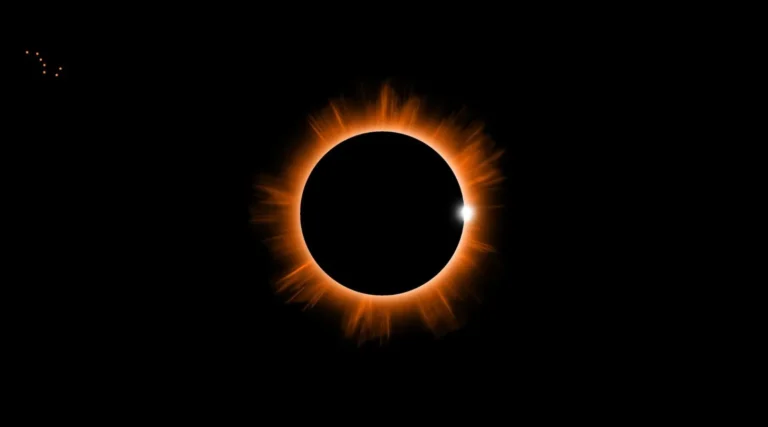2024 Total Solar Eclipse: A solar eclipse is an astronomical event in which the Moon passes in front of the Earth and the Sun, partially or completely blocking the Sun’s light.
On April 8, a complete solar eclipse that will transform day into night over North America is expected to provide skywatchers with an amazing celestial show. A few places are able to see total eclipses, which are spectacular events that cause the sky to darken.
For this reason, seeing an eclipse is frequently referred to as a once-in-a-lifetime event.
What is a Solar Eclipse?
When the Moon moves in front of the Earth and the Sun, it can completely or partially obscure the Sun’s light, a process known as a solar eclipse.
An area of the moon that totally obscures the sun creates a shadow on Earth known as a “path of totality.” This route traverses the surface as a rather thin band. If the clouds and weather align, anybody standing inside this ring can see a total solar eclipse. The sky will get gloomy, resembling dawn or dusk, when the Moon fully obscures the Sun along the line of totality.
People will only witness a partial eclipse if they are not on that line, or the path of totality. Depending on the extent to which the Moon obscures the Sun in their location, the sky will appear to them to be somewhat darker than it was prior to the eclipse.
Total Solar Eclipse Date and Timings:
April 8 is when the 2024 complete solar eclipse will take place. A 185-kilometer span between Mexico, the US, and Canada will be visible for the totality, or complete darkness of the sky. It will also be viewed in up to eighteen different US states. However, skywatchers in India won’t be able to see it.,
The complete solar eclipse is scheduled to commence at 9:12 p.m. Indian Standard Time (IST) on April 8, reach totality at 10:08 p.m., and conclude at 2:22 a.m. on April 9, 2024. Totality is expected to strike the Pacific coast of Mexico first, at around 11:07 am PDT, and exit Maine at approximately 1:30 pm PDT.
Total Solar Eclipse Duration
Although totality will only persist for around four minutes, the entire process will take roughly two and a half hours. According to NASA, during the period of complete darkness, the greatest spectacle might endure up to 4 minutes and 27 seconds.
“The Great American Eclipse of August 21, 2017,” states that “the duration of totality will be up to 4 minutes and 27 seconds, almost double that.” The length of totality for most locations along the centerline (path of totality) will be between 3.5 and 4 minutes.
How To Safely View the Eclipse?
The brightness of the Sun’s surface is so great that staring at even a little fraction of it can cause individual retinal cells to be damaged. During its partial stages, skywatchers worldwide are encouraged to wear protective eyewear, such as authorized eclipse glasses. If you don’t, you risk burning the retinas of your eyes, causing irreversible damage or maybe blindness.
Total Solar Eclipse: How To Watch It Online?
If you are unable to see the solar eclipse in person, you may watch the live feed from NASA. Beginning on April 8 at 5:00 p.m. GMT (10:30 p.m. IST), the space agency will broadcast live till 8:00 p.m. GMT (1:30 a.m. IST).
Because the surface of the Sun is so brilliant, gazing at even a little portion of it can destroy individual retinal cells. Skywatchers everywhere are advised to wear protective eyewear, such as approved eclipse glasses, during its partial phases. If you don’t, you run the danger of scorching your eye’s retinas, which might result in blindness or other permanent damage.
Additionally, you may see the live broadcast that the McDonald Observatory in Texas is hosting. On April 8, at 4:30 p.m. GMT (10:00 p.m. IST), the skywatching website timeanddate.com will also broadcast live coverage of the total solar eclipse on its YouTube page.
ALSO READ:







